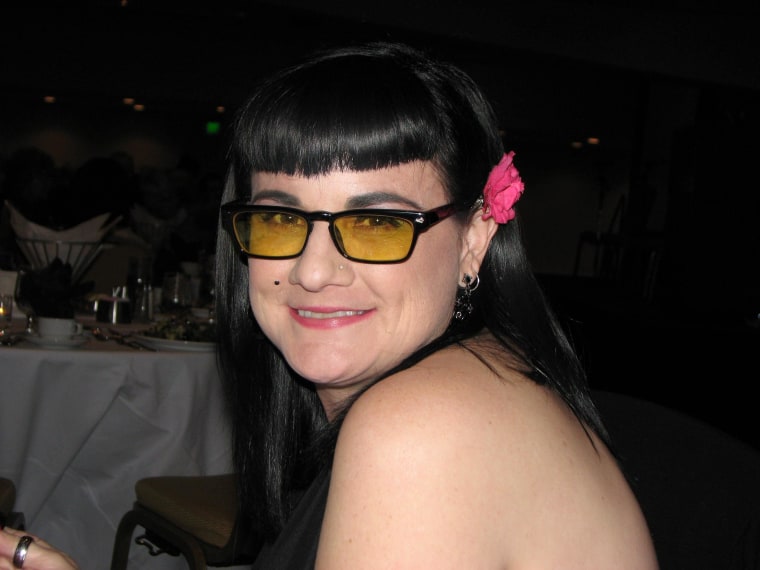From time to time, everyone picks their skin, whether it's squeezing a pimple or removing peeling skin. But for people with compulsive skin picking, "We just take it to a whole new level," says Dana Marie Flores, who has struggled with this disorder for 30 years.
Flores started by picking at pimples on her face when she was 12 or 13. She'd spend hours with her face an inch away from the bathroom mirror picking at any acne bumps she saw and using her pinky fingernails to squeeze out the pus.
To her, picking served a useful purpose. "When I first started to pick, it was self-soothing," admits Flores. "If something came out [like pus], it's affirmation that something was in my skin." There was a feeling of satisfaction and relief.
Flores said picking at her face then evolved to picking at any bump she'd find on her arms or legs. "I'd think of it as fixing a problem, removing an ingrown hair, evening things out on my skin," she recalls.
When doing it, Flores says her mind enters a trance-like state. "It's really an escape, like a drug. It's so self-soothing you lose track of time," she explains.
Although the urge to pick is incredibly strong and it can seem hard to fight, the 42-year-old mother of two from Phoenix eventually recognized her behavior was "a grooming habit gone terribly wrong."
Compulsive or pathological skin picking, which is also known as dermatillomania, falls under the umbrella of a "body-focused repetitive behavior," says Dr. Ted Grosbart, PhD, a Boston-based clinical psychologist who specializes in dermatology.
People with this impulse-control disorder have a strong urge to pick at their skin over and over again to a significant enough degree that it does noticeable tissue damage and they experience it as a problem, Grosbart explains.
He says the condition, which is more common in women, has a genetic basis. And there's often an emotional stressor or hormonal trigger (like puberty), which touches it off.
"Skin picking is not a character flaw, and it's not a bad habit," Grosbart points out. "It's a real medical condition with a biochemical underpinning." Researchers are also noticing slight variations in brain structure and function in people with the condition.
According to Grosbart, skin picking is a "hidden epidemic." "We used to think it affects 3 to 4 percent of the population, but the latest studies suggest the lifetime incidence may be closer to 15 to 16 percent," he says.
Sufferers may at first rationalize the picking as a type of skin care but it then crosses the line into a form of skin abuse.
"The shame is huge," says Flores. "You assume you're the only person doing this, and you feel like a freak.
"The shame felt is often more damaging than the physical damage done to the skin," she adds.
Many skin pickers feel so ashamed they hide the behavior from their family members, spouses and friends. They conceal any scabs under clothing, or by wearing Band-Aids, or with makeup.
They might pick skin in less noticeable places, like the scalp or chewing the insides of their mouths. Or they make up excuses: A bad reaction to a new medication or an attack by mosquitoes.
If they finally open up and confide in someone, that person may have difficulty understanding why pickers just can't stop.
As Flores put it, "The 'just-stop theory' sounds great." But your skin is always available and you can't exactly get away from it, she says.
Flores makes the analogy that the strong temptation to pick her skin is like being a recovering alcoholic with hundreds of bottles of beer and booze tied to your body. With 24/7 access to her skin, picking is an easy behavior to fall into when she feels angry or stressed.
Flores' path toward healing began seven years ago when she saw a TV news story about people who compulsively pull out their hair, or trichotillomania. The story referred her to a website for the Trichotillomania Learning Center, a nonprofit educational organization, where she finally discovered information about skin picking.
"After 23 years of doing this, I could not believe there were other people out there like me," admits Flores. She joined a local support group, attends their annual retreats, and serves on their Board to help get the word out.
She's learned new tools for keeping her hands busy -- playing with bubble wrap to give her the same tactile sensation of popping pimples -- to help curb the behavior. Still, it remains an ongoing struggle to battle the impulse.
"I don't base my recovery on how my skin looks, but on how I feel inside," Flores says. "And that has changed 1,000 percent."
Related:
